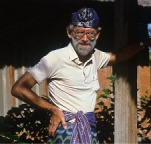 |
CULTURES IN CONTEXT Bali: Ancient and Modern 1. Physical and Cultural Environments |
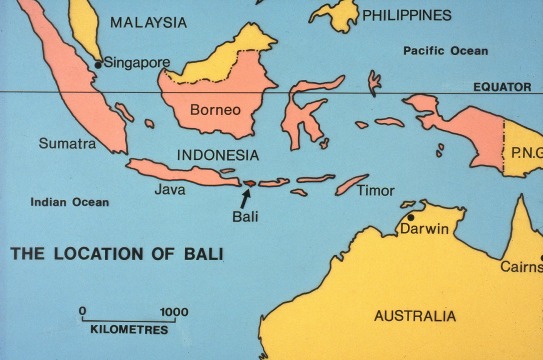
001. Bali is a small island in Indonesia, close to the equator, and north of Australia. It measures 140 kms from east to west and 80 from north to south. It is located at the western end of the Lesser Sunda Islands, between Java on the west and Lombok to the east. Its population is close to 4.5 million; and its capital, Denpasar, is located in the south. |
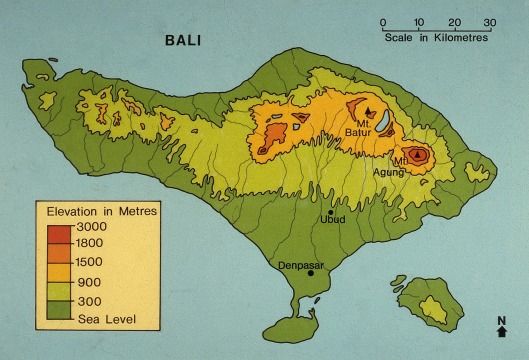
002. The volcanic peaks which dominate its landscape are part of the "Ring of Fire" which surrounds the Pacific Ocean, and when they erupt they replenish Bali’s soils with fresh layers of volcanic ash. As a result the island’s farmers enjoy some the world’s most fertile tropical soils. |
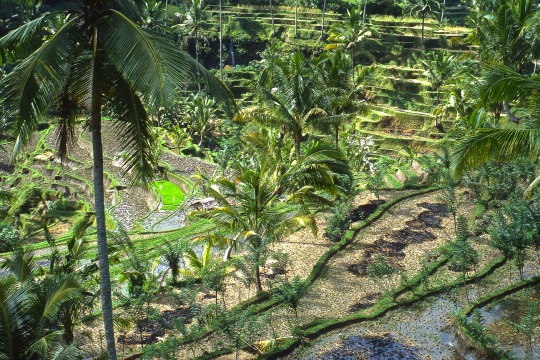
003. Because it is only 8 degrees south of the equator Bali is hot all year round, with temperatures of 30 or 31°C during the day and 23 or 24°C during the night. Humidity is high year-round, because its equatorial location and its mountains cause heavy rains. The rivers they sustain have carved out deep valleys, and also provide a good supply of water for irrigation. |

004. In Bali, however, though the scenery is beautiful it is more than just background to daily living: it has spiritual significance. The mountains are considered to be the throne-rooms of the gods and, as a result, they often feature in the background of paintings of daily life, especially Gunung Agung. |
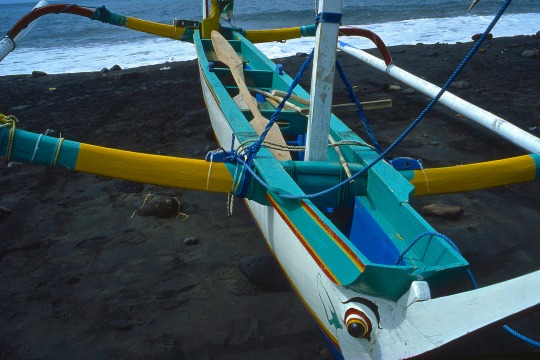
005. In contrast, dark valleys and the deep sea are traditionally thought of as the home of evil spirits. Fishing boasts have eyes to see in the dark and also frighten evil spirits away. In other words, in Bali things high up are thought of as holy, while things at ground or sea level are evil or unclean. |
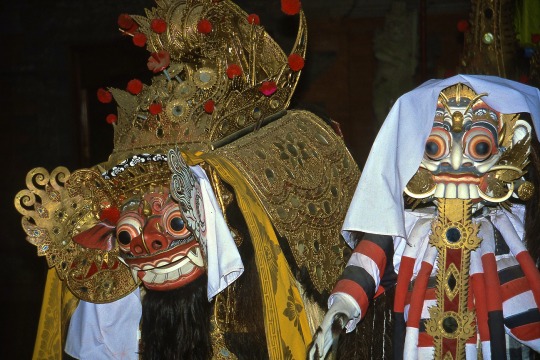
006. People here live between these two worlds, and the struggle between good (represented by the friendly Barong on the left) and evil (personified by the witch Rangda) is one in which, in one way or another, the Balinese participate daily. |
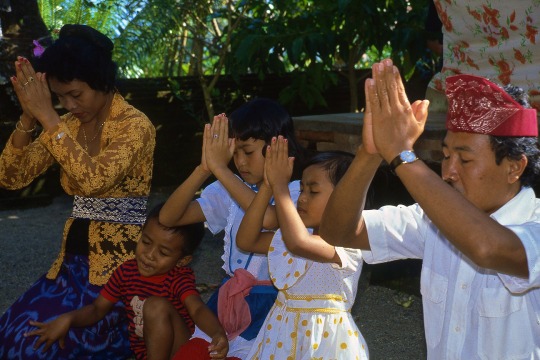
007. Though most people in Indonesia are Muslims, 85% of the Balinese are Hindus, and the population is divided into social groups, or castes, like people in India. In Bali, however, the boundaries between castes are nowhere near as strict. Your caste determines the role you play in religious ceremonies but has little impact on your daily life. |
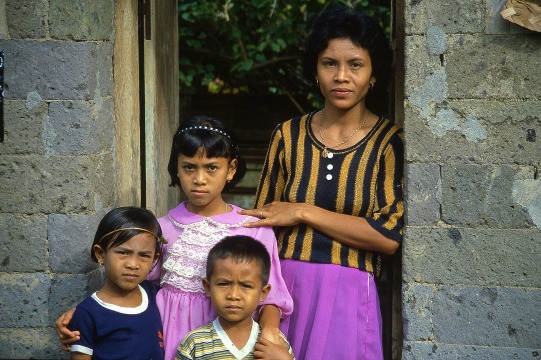
008. Ninety percent of the population are Commoners, or Sudras. The rest belong to the aristocracy, to the merchant caste, or to the Brahman or priestly caste. The family with whom I stayed were Sudras, and they lived in the village of Ubud. |

![]()
Text, photos and recordings
by John Tyman
Intended for Educational Use
Only.
Contact Dr. John Tyman at johntyman2@gmail.com
for information regarding public
or commercial use.
![]()
www.hillmanweb.com
Photo processing, Web page layout,
formatting and hosting by
William
Hillman ~ Brandon, Manitoba ~ Canada